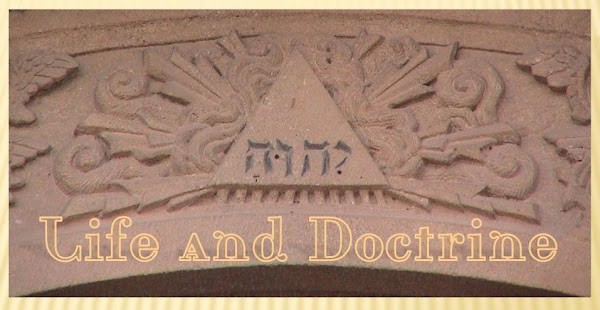Allow us a circumlocution; Muslims believe that the Hadith, the traditions, are second in authority to the Qur'an. Each Hadith relies on a line of witnesses, each begins with a statement such as, “Narrated 'Abdullah bin 'Umar” or “Narrated Salim’s father” thus, the Hadith are traced back to a saying or action of Muhammad.
Each Muslim group picks and chooses which Hadith they consider reliable and which they do not; a strong and weak Hadith. For example, many Muslims (particularly Black Muslims) do not like to think of Muhammad as a white man who owned black slaves as some Hadith teach.
Quoted from Sahih Bukhari:[i]
Vol. 1, Book 3, #63, “‘Who amongst you is Muhammad?’ At that time the Prophet was sitting amongst us (his companions) leaning on his arm. We replied, ‘This white man reclining on his arm.’”
Vol. 2, Book 17, #122, “a white (person) (i.e. the Prophet).”
Vol. 6, Book 60, #435 refers to “a black slave of Allah’s Apostle.”
The point is that in Roman Catholicism there is no such line of witnesses, no substantive evidence at all that their traditions can authentically be traced back to the Apostles. Indeed, the fact that many of these traditions do go against Biblical doctrines speaks strongly against apostolic origin. Many of these traditions can actually be traced back to Gnostic writings, and or, various apocryphal books from post New Testament times.
For example, Mary’s assumption and other such stories come from apocryphal books such as the fourth century Passing of Mary and the sixth century Nativity of Mary. Roman Catholic theologian Ludwig Ott wrote,
“Direct and express scriptural proofs are not to be had….The idea of the bodily assumption of Mary is first expressed in certain transitus-narratives of the fifth and sixth centuries. Even though these are apocryphal, they bear witness to the faith of the generation in which they were written despite their legendary clothing.”[ii]
Lastly, a word about the circular reasoning regarding relying on tradition in granting the Roman Catholic Church infallibility and the Church granting infallibility to the traditions.
“…a novice in logic can see that the thing to be proved, viz., the infallibility of the church, is assumed, and that tradition, instead of being traced down through history and thus being established by the historical method, is pronounced infallible because the church has held it…If tradition is invoked to prove the infallibility of the church, one should not with the next stroke of the pen argue for the correctness of tradition on the basis of the infallibility of the church. For tradition to be accepted as trustworthy evidence in establishing the infallibility of the church it will have to be established by history.”[iii]
[i] “Sahih Bukhari is a collection of sayings and deeds of Prophet Muhammad…Each report in his collection was checked for compatibility with the Qur'an, and the veracity of the chain of reporters had to be painstakingly established. Bukhari’s collection is recognized by the overwhelming majority of the Muslim world to be one of the most authentic collections…is considered second to none” (M. Muhsin Khan, trans., Sahih Bukhari, from the introduction).
[ii] Ludwig Ott, Fundamentals of Catholic Dogma (Rockford, Ill.: Tan Book Publishers, 1974), pp. 208-210
[iii] Paul Matthews, Basic Errors of Catholicism (Rosemead, CA: Old Paths Book Club, George W. DeHoff, 1952), pp. 25-26


 Get my ebook, "The Apocryphal Jesus," here
Get my ebook, "The Apocryphal Jesus," here

No comments:
Post a Comment
Note: Only a member of this blog may post a comment.